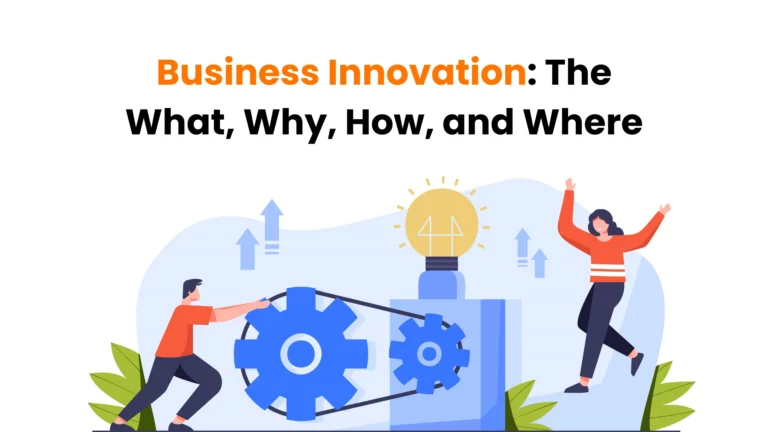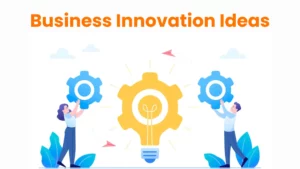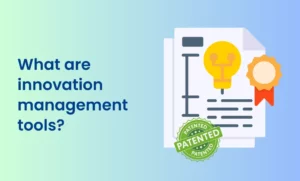Here’s a story about business innovation at the ground level and how an employee turned a difficult situation into business innovation and opportunity.
In India, the finance ministry recently recalled all 2000-rupee notes and discontinued its circulation. They announced August 31, 2023, as the deadline to exchange the notes with the new ones or deposit them in the banks.
It caused panic, uneasiness, and restlessness in the people, resulting in long queues outside the banks, overburdening on the bank staff, and people refusing to accept the 2000-rupee notes for small or large transactions.
While people were busy trying to find ways to get rid of the notes, a manager of an eatery in New Delhi came up with a genius idea for their business.
The café introduced party packages starting from Rupees 10000 and allowed their customers to give their 2000-Rupee notes to them and actually invited them to do so.
Taking this instance as an example, let’s learn the fundamentals of business innovation.
What is business innovation?
Business innovation refers to a new solution for any business challenge that eventually leads to growth and monetization for an organization.
This solution can be a new product, service, strategy, process, business model, or management plan. It does not necessarily have to be a breakthrough solution that creates a whole new industry for the company but a solution that upgrades positioning, branding, and value proposition.
As we saw in the example above, the cafe’s manager took a stressful situation and turned it into a win-win situation for both its customers and business.
No one likes to wait in a queue for long hours, but everyone sure loves to eat. There’s a better possibility of people making plans with their friends to take on a 10,000 or more food package and spend quality (food) time.
To be precise, business innovation can take various forms, such as:
Product Innovation
Organizations focus on creating new or improved products or services that solve specific customer pain points. These innovations can include enhancements, new features, or entirely new offerings.
Related Read: Microsoft’s entry into gaming console business with XBOX
Process Innovation
Contrary to popular belief, business innovation does not always mean innovating to create new products or services for customers. It also involves process innovation that focuses on improving internal operations and business workflows. It helps increase efficiency, improve employee engagement & satisfaction, reduce operational costs, and improve the quality of products or services.
Related Read: Business Benefits of Intrapreneurship
Business Model Innovation
Business model innovation refers to rethinking the way your company captures, creates, and delivers value. For example, working on pricing strategies, distribution channels, partnerships, or revenue models are all part of reimagining the business model.
Related Read: How Anjali Sud brought Business Model Innovation to Vimeo?
Marketing and Sales Innovation
Marketing and sales are often referred to as the soft aspects of a business, but there’s a drastic change in the notion. People now fully understand the capability of good marketing and sales. Therefore, innovation efforts in marketing and sales strategies help a business reach new customers, enhance customer engagement, and improve brand recognition.
Here’s a good infographic to show you why marketing innovation is important:

Organizational Innovation
Organizational innovation is basically introducing an innovation culture and intrapreneurship program at the grassroots level. It leads to changes in the company’s structure, culture, and management practices. This type of innovation is key to improved collaboration, employee engagement, and overall organizational performance. The ultimate goal is to align the business strategy and innovation strategy for holistic organizational development.
Related Read: How to build an innovation strategy?
Technological Business Innovation
The latest technologies, such as Data Science, Artificial Intelligence, Machine Learning, Blockchain, Quantum Computing, 5G, Biotechnology, and Nanotechnology, have been the enablers of business innovation for a long time now.
Therefore, leveraging such technologies or adopting emerging technologies to improve products, services, or operations is a common form of innovation. Companies are now investing heavily in offering the latest technology-integrated solutions to their customers.
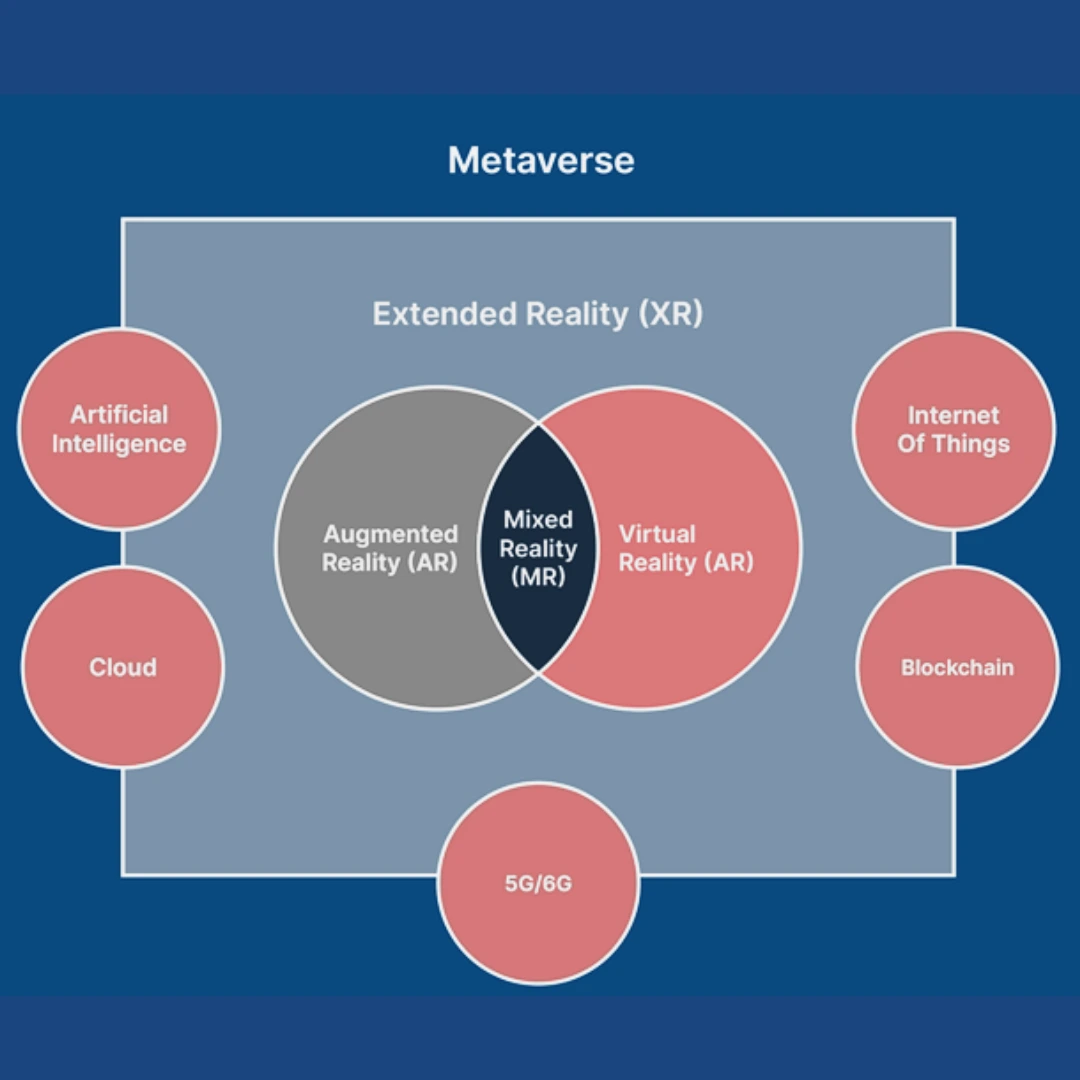
Customer Experience Innovation
When a company innovates to optimize the customers’ overall experience, from the initial interaction to post-purchase support, it falls under customer experience innovation.
For instance, retailers continue to deploy the latest technology to improve the online shopping experience of their customers, such as the try online option leveraging virtual reality.
But that’s not it. These retailers equally pay attention to offline experiences to create a wonderful in-store shopping experience as well.
All these are a small part of customer experience innovation.
Sustainability and Environmental Innovation
Any big brand or enterprise is now consciously making efforts to reduce its carbon footprint and environmental impact by developing eco-friendly products and adopting green practices. It’s the need of the hour to make sustainability and environmental innovation a reality.
Open Innovation
Best defined as the approach that involves collaboration with external partners, such as customers, suppliers, or other organizations, open innovation facilitates generating new ideas and innovations. Open source development, open innovation pages, dedicated sites by companies for open collaboration, and sharing ideas are all examples of open innovation.
Quick example: Lego’s mini-Big Bang Theory Lego set is a community-based product that originated on their site, Lego Ideas.

Social Innovation
Businesses that focus on addressing social and community challenges through innovative solutions, with a triple bottom line approach that considers people, planet, and profit, indulge in social innovation.
Why is innovation important in business?
Let’s start with some statistics because numbers do not lie.
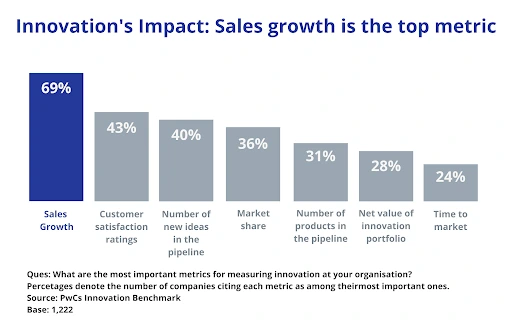
Sales growth, customer satisfaction, a sustainable ideas pipeline, market share, new products / projects pipeline, innovation portfolio, and time to market—just to name a few—are the reasons you need to invest in business innovation.
Let’s dive deeper!
Business Innovation Paves the Way for Differentiation
Recall the example we provided you in the introduction. Now, just give a thought to how much the cafe would have earned in revenue and new customers through its employee innovation. That’s why business innovation is important!
Innovation allows businesses to stand out in the marketplace. Unique products, services, or processes provide a competitive edge through differentiation.
Growth and Expansion through Business Innovation
Innovation drives revenue growth. Naturally, when a company allows everyone in-house to expand their innovative efforts and develop novelty, it opens up additional revenue streams and opportunities for business expansion. Customers are anyway often drawn to new and improved offerings.
Cost Savings and Efficiency
Instead of resorting to rounds of cuts and layoffs, companies must choose to align their innovation strategy with their cost savings initiatives. Business innovation enables organizations to be agile and work on technological advancements, process improvements, and more efficient supply chain management. In turn, they are able to monetize without compromising on their core capabilities.
Customer Satisfaction
The customer is king! One of the oldest principles every organization follows is to keep their customers happy. But in a market where everyone is offering 1000s of versions of each product and service, how do you satisfy your customers and retail their loyalty?
Through innovation!
Innovation makes you capable of understanding what customers need and when they might need it and even equips you to generate demand.
When you provide customers with what they desire, your business wins! Such innovations can be better user interfaces, quicker response times, or more personalized services that lead to higher customer satisfaction and loyalty.
And satisfied customers are more likely to become repeat buyers and brand advocates.
Adaptation to Change
Given how fast the market changes, consumer demands, and preferences change, and even your business goals change, innovation helps in managing all the changes.
And remember when Jack Welch, a business executive, said, “If the rate of change on the outside exceeds the rate of change on the inside, the end is near.” We second the thought.
It is important to keep up with the changes by leveraging innovation potential within the organization to stay up-to-date in today’s fast-paced business environment.
Talent Attraction and Retention
Highly talented people are often driven by their desire to innovate, work on amazing projects, and practice autonomy over their work. Therefore, innovative companies tend to attract top talent. Employees are often drawn to organizations that offer opportunities to work on exciting and challenging projects.

Business Innovation for Brand Reputation
Being known for innovation enhances a company’s reputation and brand image, which attracts not only customers but also partnerships, investors, and multiple stakeholders.
Why do you think Apple is so successful if not for its brand recognition? Apple has successfully fostered brand loyalty by providing innovation in return.
Long-Term Viability
Continuous innovation is essential for a business’s long-term viability. Introducing innovation and idea and innovation management practices helps ensure a sustainable and robust innovation pipeline. The end result is a live repository of ideas and a central mechanism for innovation.
How innovation works?
Traditionally, innovation is about making use of emerging technologies to cater to changing consumer needs and preferences.
However, the latest market environment and real-time situations play a pivotal role in business innovation.
Be it a global pandemic affecting business strategies and forcing organizations to accelerate their innovation efforts to strive in a difficult environment or a country’s demonetization policies, the need for business innovation remains.
And having a business innovation model helps perpetually.
Essentially, organizations must follow a three-level model for innovation.
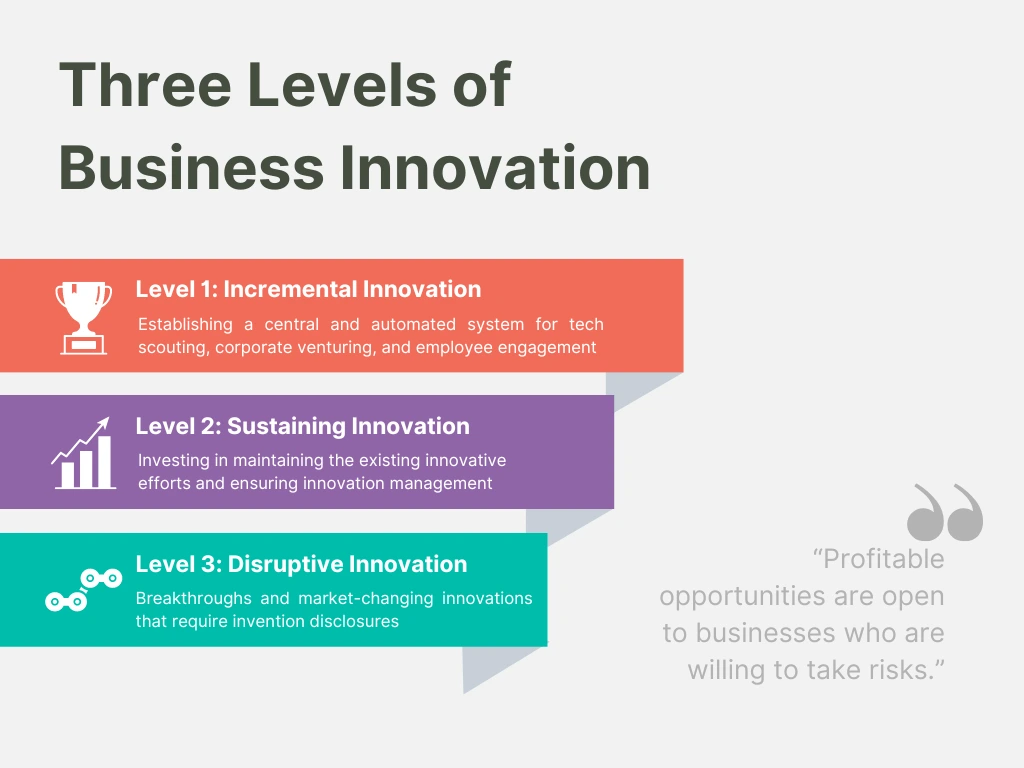
Level 1: Incremental Business Innovation
At the first level, businesses essentially work on developing new products and services and have a good cost structure, net promoter score, customer satisfaction level, and growing leads. For example, any company that offers SaaS would focus on incremental innovation to:
- Reduce the cost of building and maintaining software
- Reduce customer acquisition costs
- Get customers to renew their subscription model
- Deliver high-quality products with continuous upgrades
This level of innovation is all about novelty in internal processes, products, or services. These innovations don’t necessarily have to be groundbreaking innovations.
Level 2: Sustaining Business Innovation
After a company has successfully been working on the fundamentals, it can move to the next level of innovation, i.e., optimizing existing products, services, processes, models, and strategies. For example, the same SaaS-based company can now focus on sustaining innovation by:
- Creating a similar product or service to their core software but targeting a specific customer segment
- Working on a free tool that would generate more prospects and eventually leads
- Working on a model that transitions users from the free tool to a subscription model.
This level is all about trying new things without too many risk factors.
Level 3: Disruptive Business Innovation
Level 3 is probably the most fruitful and capable of creating multiple revenue streams. However, companies must not exceed 10% of their time and resources in chasing radical and breakthrough inventions. These innovations usually help businesses enter a new market and create a new industry altogether.
For example, if the SaaS-based company used its employee ideas, intrapreneurial spirit, experience, and expertise to enter a different technology market, they’d be using a disruptive business innovation model.
This level is all about scouting for ideas that are capable of turning into full-blown inventions.
Where does innovation begin?
For a company to capture innovation at any level, it needs an innovation pipeline, program, and professional mechanism. And here’s a detailed description of where innovation occurs.
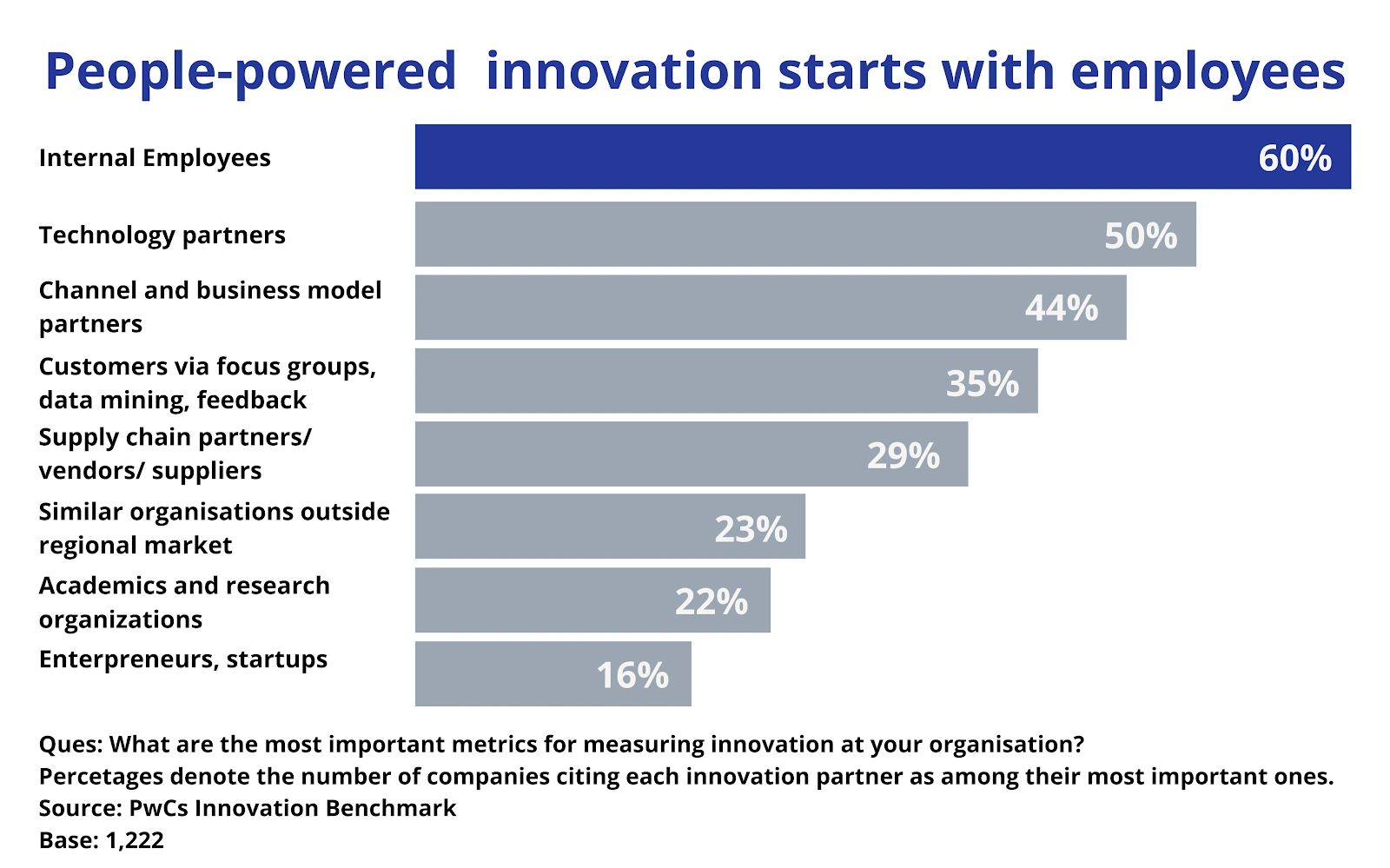
Employee Contributions
As the study suggests, employees are the best asset of any company to start innovation.
If given a chance, guidance, and a proper platform, employees provide their best work, creativity, and ideas for internal and business benefits.
The problem is organizations do not have a clue of how to organize for innovation. It almost becomes an abstract concept for them.
First, it’s crucial to understand that people are the drivers of innovation, and it is impossible to innovate and grow without their involvement.
Another pivotal piece of information is that innovative ideas can come from any individual; no designation can guarantee innovation. A sales executive can have an idea for a new product, and a product person can have an idea for efficient marketing.
So, we need to do away with the idea of limiting innovation to specific departments or teams. It must be open to all.
So, how is it possible to engage every employee of an organization–large or small?
Through an idea management and innovation management framework! An idea management system that enables the following framework, seamlessly and effectively:
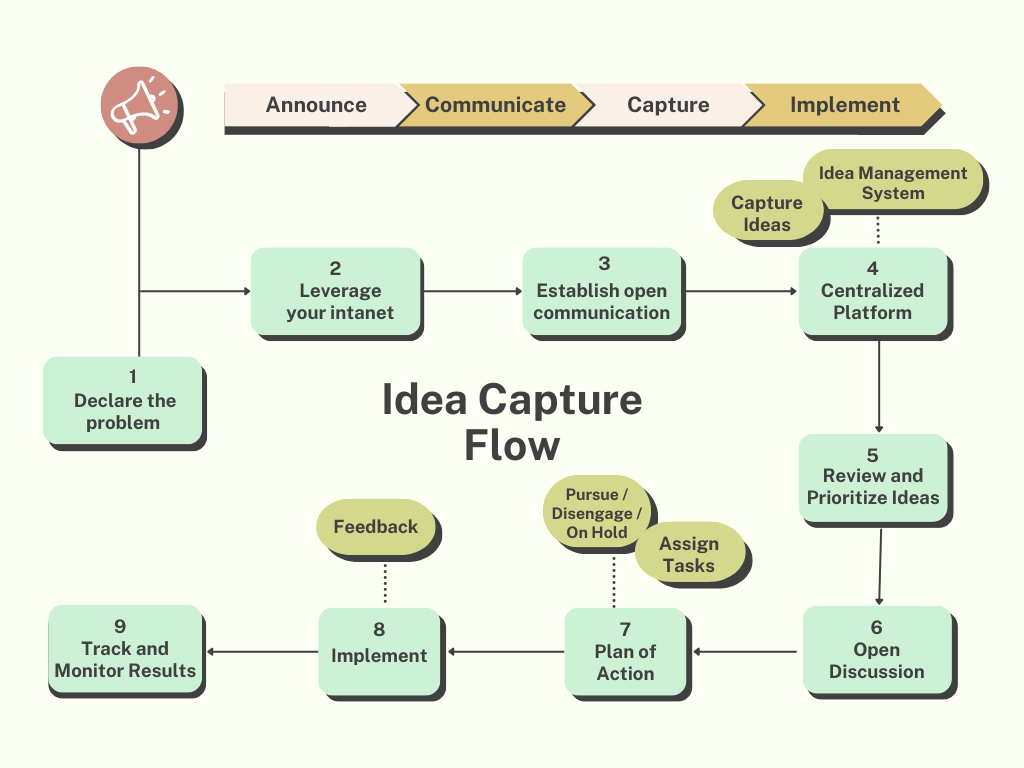
An innovation management system catering to ideas turned into inventions that require protection. The system enables:
- Drafting technically correct and comprehensive invention disclosures
- Collaborate and evaluate disclosures as required
- Add the required data sequentially
- A good chance of approval at the patent office
Customer Feedback
Consumers today, like any entrepreneur or a working professional equipped with technology. They do their due diligence before making any buying decision. They use digital media to rate providers, write detailed reviews, comment, and ask for what they need.
As an innovator, listening to customer needs, complaints, and suggestions can provide valuable insights for innovation. It enables businesses to anticipate, act on, and adapt to consumer preferences and desires.
You can receive customer feedback through:
- A dedicated portal or page on your website to encourage feedback and suggestions.
- A forum on your website that encourages open communication.
- A direct connect line to hear them out.
- Going beyond the customer support mechanism.
Research
Academics and research have always been the go-to method for every business leader to uncover trends, gaps in the market, and emerging opportunities. The research methodology includes:
- Analyzing competitor offerings and consumer behavior to get inspiration for new ideas and pave the way for business innovation.
- Emerging technologies and scientific discoveries often spark innovative ideas. Businesses can adapt and apply new technologies to improve their products or processes.
- Monitoring long-term trends, such as demographic shifts, technological advancements, or economic changes, can provide insights into future opportunities.
- Analyzing data related to customer behavior, such as purchasing patterns and online interactions, can reveal patterns and preferences that inform product or service improvements.
Cross-Functional Collaboration
Bringing together individuals from different departments or backgrounds can lead to innovative solutions. Collaborative brainstorming sessions and interdisciplinary teams foster creativity. Basically, following the open innovation framework helps collaboration with external partners, such as customers, suppliers, research institutions, or startups, and generates fresh perspectives and ideas.
Industry Conferences and Networking
The notion that we are nodes in a network and we share information suits us best, especially in today’s fast-paced environment with the internet ruling. Interactivity and interconnectedness reign supreme.
Therefore, attending conferences, workshops, industry events, webinars, digital meetings, and so on exposes individuals and organizations to new ideas, trends, and thought leaders.
It eventually benefits them to open their minds to new possibilities and take action.
Prototype and Experimentation
Talking about innovation and doing innovation are two different things. One of the main reasons we support an idea and innovation management software is that it enables you to capture a plethora of ideas that can be pursued, tested, and experimented on. Even if they fail, there’s always learning that is useful for future innovation projects.
Creating prototypes or experimenting with new technologies and processes can lead to unexpected discoveries and innovations.
And, when an individual in an organization has the opportunity to take ownership of their innovation project, you’ll see innovation in action.
TL;DR
Business innovation refers to a new product, service, strategy, process, business model, or management plan that eventually leads to growth and monetization for an organization. A business innovation can be:
- Product innovation
- Process innovation
- Business model innovation
- Marketing and sales innovation
- Organizational innovation
- Technological innovation
- Customer experience innovation
- Sustainability and environmental innovation
- Open innovation
- Social innovation
Sales growth, customer satisfaction, a sustainable ideas pipeline, market share, new products/projects pipeline, innovation portfolio, and time to market are just a few of the reasons why business innovation is crucial to organizations, enterprises, or startups.
Here’s the framework to provide you with a general overview of how innovation works:
- Incremental innovation helps companies find their footing
- Sustainable innovation helps businesses retain their footing
- Disruptive innovation helps businesses create a blue ocean of innovation
But where do innovative ideas come from to successfully move across all the innovation levels? They come through:
- Employee innovation
- Customer contribution
- Research
- Cross-functional collaboration
- Networking
- Prototype and experimentation
Schedule a demo to learn how you can streamline the entire business innovation workflow for your business venture.
